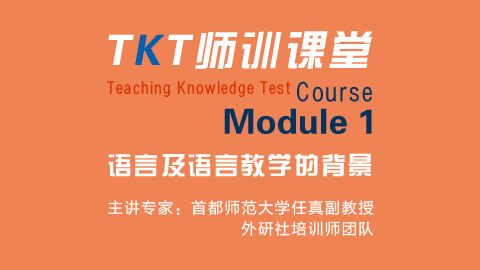Training aims
By the end of the training session, you will be able to
- know what le*s is;
- know where the words get meaning from;
- understand different relationships between words.
Contents
Part 1 : What is le*s?
Part 2: Key concepts and language teaching classroom
Part 3: TKT practice task
Part 4: Review & glossary
Part 5: Reflection & discovery activities
Which is/are le*s?
Le*s refers to individual words or sets of words, for example, tree, get up, first of all, all's well that ends well, i.e. units of vocabulary which have a specific meaning.
Where does the meaning of vocabulary items come from?
- Contex (situation): We couldn't see the house because of the tall trees in front of it.
- Prefixes: unsafe, illegal
- Suffixes: quickly, instruction
- Compounds: (nouns made from two or more separate words): bookshelf, telephone number
Chunks
Chunks refers to a language that occurs in (semi-) fixed units and that we usaully learn as one piece.
- Collocation: words that often occur together
- Heavy rain, arrive at..., hard work, no problem, a brilliant idea
- Fixed expressions: expressions which can't be changed
- To tell you the truth, new born
- Idioms: a kind of fixed expression, but their meaning is usually different from the combination of the meaning of the individual words they contain .
- Be under the weather, have green finger
Experts think that children learning their first language learn the chunks as a whole rather than in parts. This helps them to remember them bettern and recall more quickly.
Different relationships between words
- Synonyms: good-nice
- Antonyms: fast - slow
- Le*cal set: family, furniture, food
- Word family: real, really, unreal
- False friends: embarazado means pregnant in Spanish. It does not mean embarrassed
- Homophones: know-no
- Homonyms: river bank, put money in the bank
- Varieties of English: flat (British English), apartment (American English)
Language teaching classroom
A teacher usually teaches learners key words and expose them to many more. The learners pick these words up, initially only recognise their meaning, then eventually using them productively.
Learners need to meet the same words again and again as they advance in their language learning. In this way, their memory will be consolidated and they will get to know more about the word.
As words can get part of their meaning from context, and context helps to show the meaning of words, it is useful to teach them in context rather than in isolation, e.g. through texts, stories or descriptions of events...


